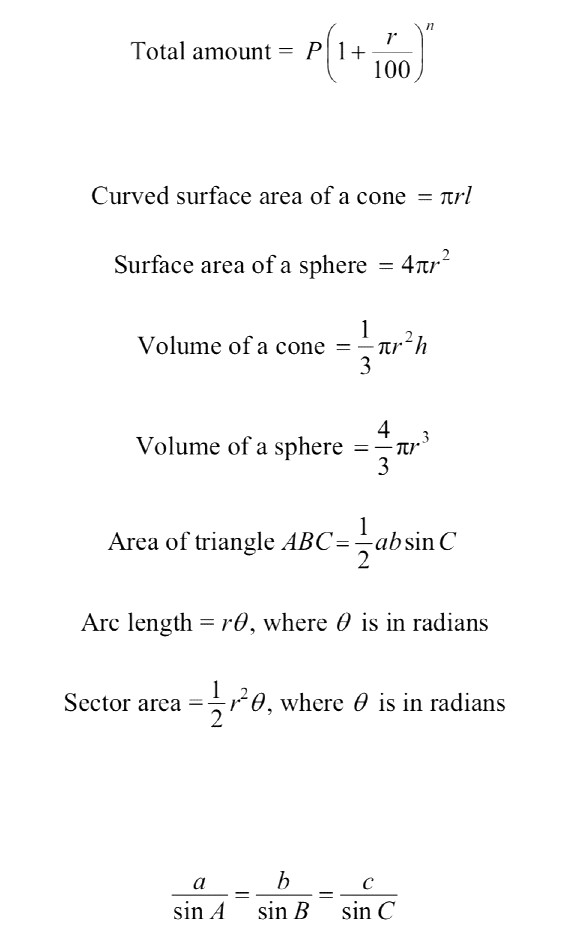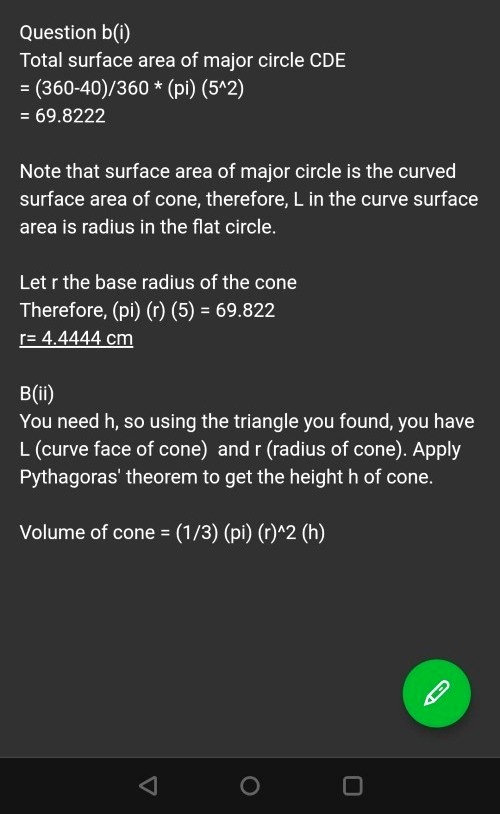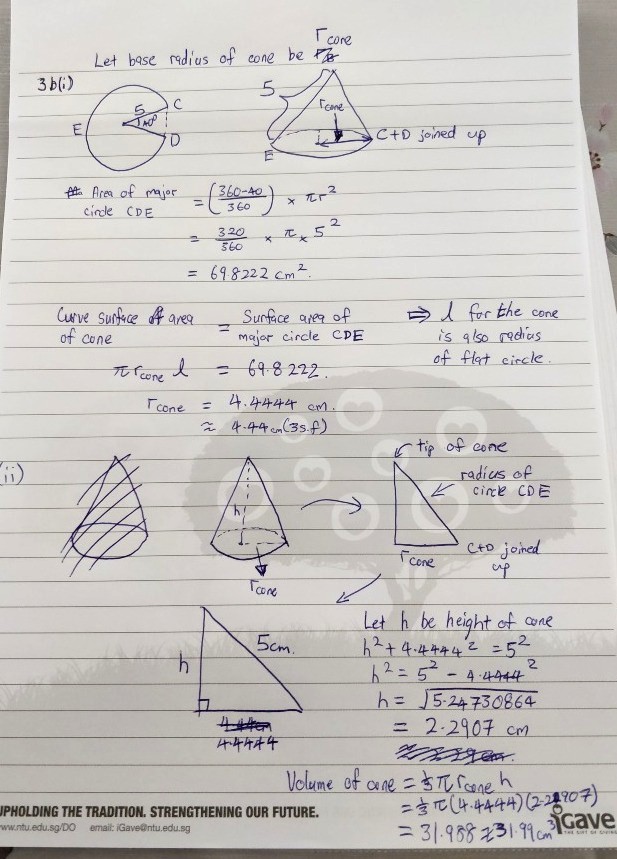Ask Singapore Homework?
Upload a photo of a Singapore homework and someone will email you the solution for free.

See 3 Answers
done
2 Upvotes
clear 0 Downvotes
You can work backwards from the volume of a cone equation.
h= the radius of the larger circle
r= base radius, answer you found in the previous part.
Hope it helped you! If you still don’t understand or need help, you can contact me at j_a_b_e_z@yahoo.com.sg!
h= the radius of the larger circle
r= base radius, answer you found in the previous part.
Hope it helped you! If you still don’t understand or need help, you can contact me at j_a_b_e_z@yahoo.com.sg!
Date Posted:
5 years ago
done
1 Upvotes
clear 0 Downvotes
Apologies that I am unable to provide a written solution. Hope this helps. Will be able to provide a written one if you still need it later. Just comment here
Date Posted:
5 years ago
How to find the curve face of cone?
The curved face of the cone, is actually the radius of the circle. Because you are curling the major circle section into a cone.
Try using a post it or a small piece of paper to tear into the shape and you will be able to visualize better
See this gif for better illustration
https://images.app.goo.gl/4qJwdox9RhTTXYo38
Or
https://blender.stackexchange.com/questions/64204/how-to-deform-a-2d-shape-to-make-a-3d-object
(first reply from the question)
Try using a post it or a small piece of paper to tear into the shape and you will be able to visualize better
See this gif for better illustration
https://images.app.goo.gl/4qJwdox9RhTTXYo38
Or
https://blender.stackexchange.com/questions/64204/how-to-deform-a-2d-shape-to-make-a-3d-object
(first reply from the question)
So it is just the original radii of 5cm? Then I use Pythagoras Thereom of square root 5^2 + 4.444^2 to find h, right?
I will upload a written version. See the other solution instead
Hopefully this helps
Volume of cone should be ⅓πr²h instead of ⅓πrh. Think you've forgot to multiply by ⅓ in the calculation too
Final answer should be ⅓π(4.4444)²(2.2907)cm³ ≈ 47.38cm³
Final answer should be ⅓π(4.4444)²(2.2907)cm³ ≈ 47.38cm³
You are right! Thanks for pointing out the mistake. Did it in a rush
Welcome, just trying to help









But if you can understand these three equations, you will be able to solve b(i) and b(ii)!
b(i) cosACD=base radius/AC
b(ii) sinACD=h/AC
Volume of cone=1/3(pi)(base radius)^3(h)
Best I can do now ps. If you can have the answer later I can write for u at night.
The question is actually asking for the cone formed when sector CED is folded into a large cone by joining AC and AD together